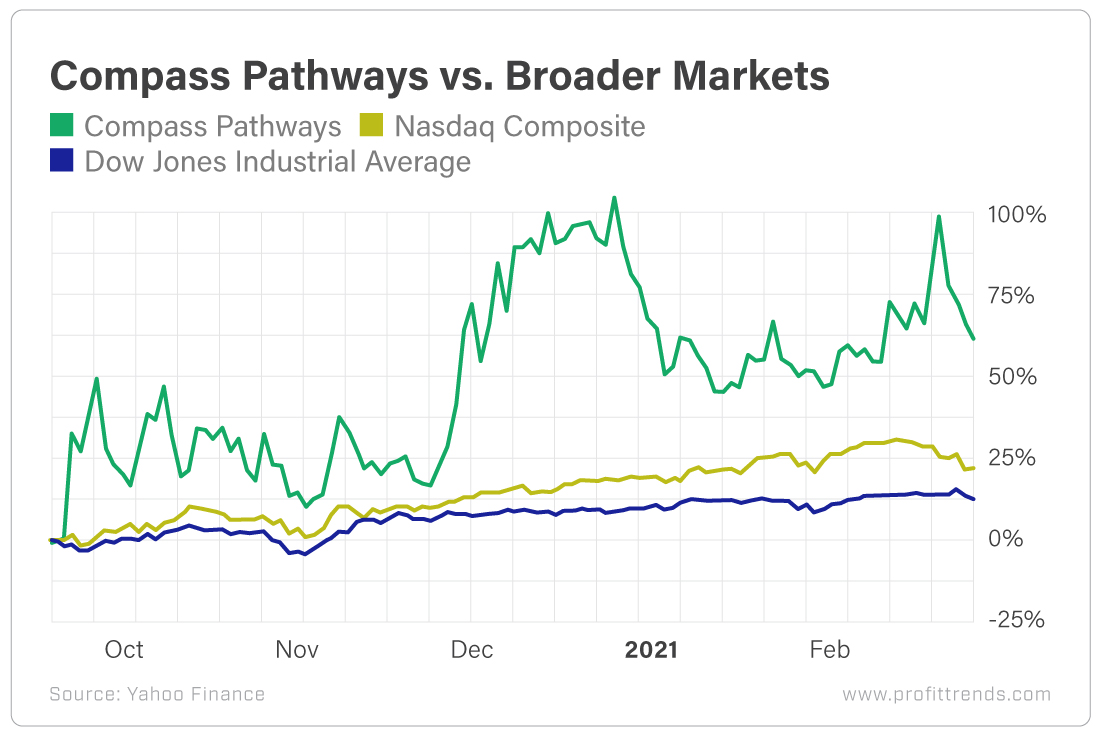In 2019, there were 47,511 cases of suicide in the U.S. Suicide is the 10th-leading cause of death in the country. Although for younger generations - where rates are soaring - suicide is the leading or second leading cause of death. But those 2019 numbers were actually a bright spot. They were a 2% drop from 2018's total and represented a victory for the mental health community. It was the first time in 20 years that suicides in the country had fallen. Then, COVID-19 struck. The markets briefly crashed. Unemployment skyrocketed. Businesses closed for good. And tens of millions of Americans were quarantined at home. In 2020, suicide rates jumped across the country. And though the final toll has yet to be calculated, there's fear that it was an unwanted record year. But this is only one small piece of a looming mental health crisis. One that not only impacts the U.S. but is being felt around the globe. Fortunately, new medicines and treatments are offering hope. And the companies offering these breakthroughs are quietly reaping the benefits. From Leg-Irons to PillsThroughout much of human history, mental illness has been grossly misunderstood. And the so-called treatments ranged from ludicrous to barbaric. The ancient Greek physician Hippocrates believed depression - or what he referred to as "melancholia" - was caused by an imbalance of the four bodily fluids: yellow bile, black bile, phlegm and blood. He believed too much black bile in the spleen caused depression. To remedy this, he recommended bloodletting and baths. Aulus Cornelius Celsus, who wrote the famed De Medicina, believed in beatings, leg-irons and starvation to treat mental illness... anything that would stir up the spirit. Fast-forward nearly 2,000 years and treatments haven't gotten much better. In the 20th century, doctors used electroconvulsive therapy and lobotomies to treat depression. It wasn't until the 1950s that people noticed the tuberculosis medication Isoniazid appeared to help some patients suffering from depression. And over the next several decades, we saw the emergence of tricyclic antidepressants (TCAs), like Anafranil, Norpramin and Tofranil, as well as selective serotonin reuptake inhibitors (SSRIs), like Celexa, Lexapro, Prozac and Paxil. These helped millions of patients and created billions of dollars in revenue for companies. But we're still facing a crisis. Depression is the leading cause of disability worldwide. And it's a major contributor to the overall burden of disease globally. For instance, in the U.S., the annual cost of depression is more than $200 billion. Not to mention, depression can lead to suicide. And more than 800,000 people around the world take their own lives each year. Even worse, there's treatment-resistant depression (TRD). Antidepressants and counseling help ease the symptoms of depression for many people. They can help people manage the illness and live a "normal" life. But for others, these simply don't work. So not only does TRD impact a person's quality of life, but it's also a financial burden, as there's a constant need for tweaks. Just in the U.S., TRD patients face medical costs two to three times those of other major depression sufferers. But here's the truly staggering figure: It's estimated that almost one-third of all patients with major depressive disorder suffer from TRD. Thankfully, there is a potential salvation for patients, as well as a massive upside for investors. And the roots of this treatment can actually be traced back further than Celsus' De Medicina. | 






No comments:
Post a Comment
Keep a civil tongue.